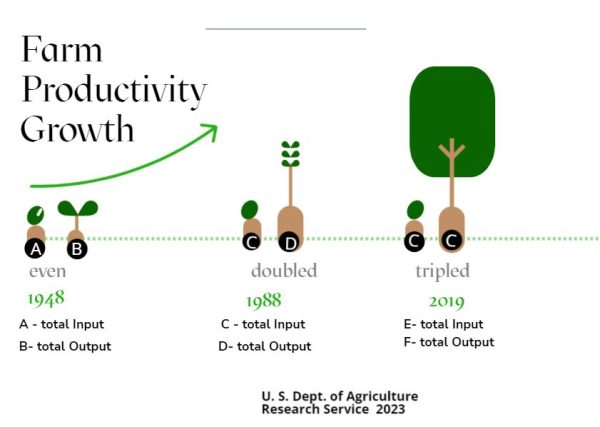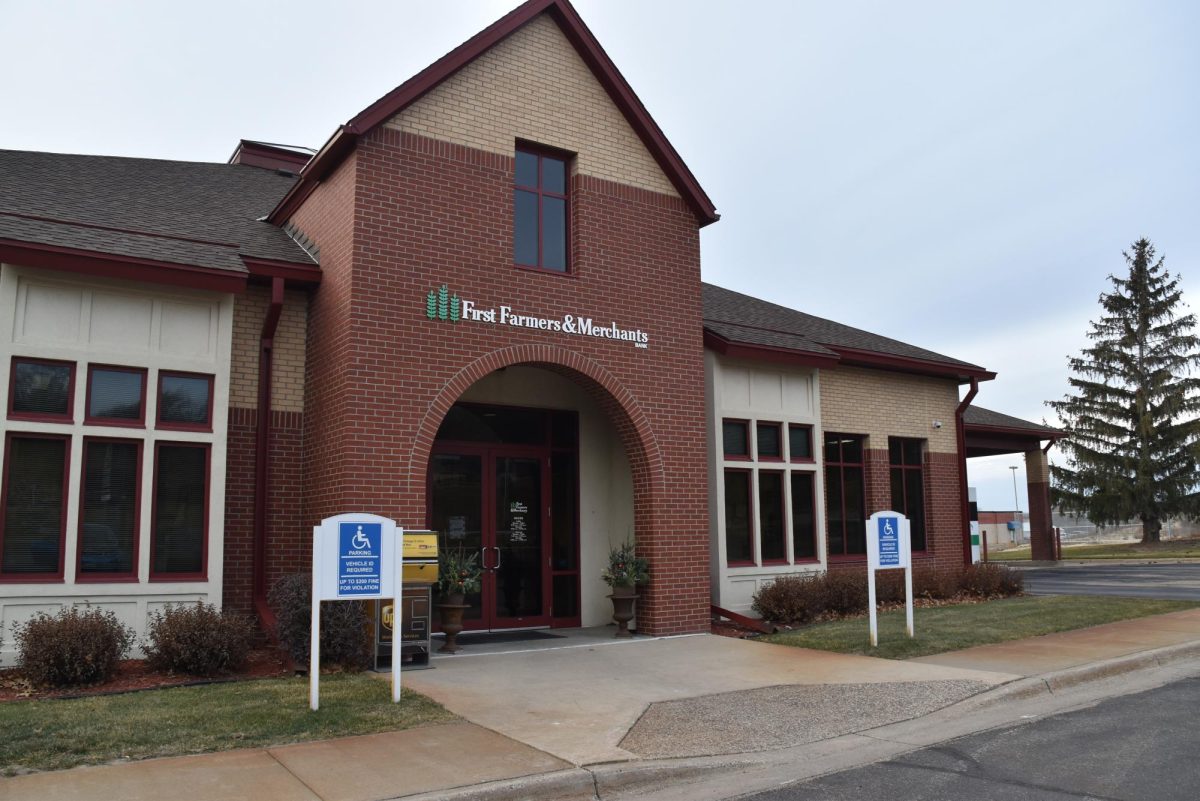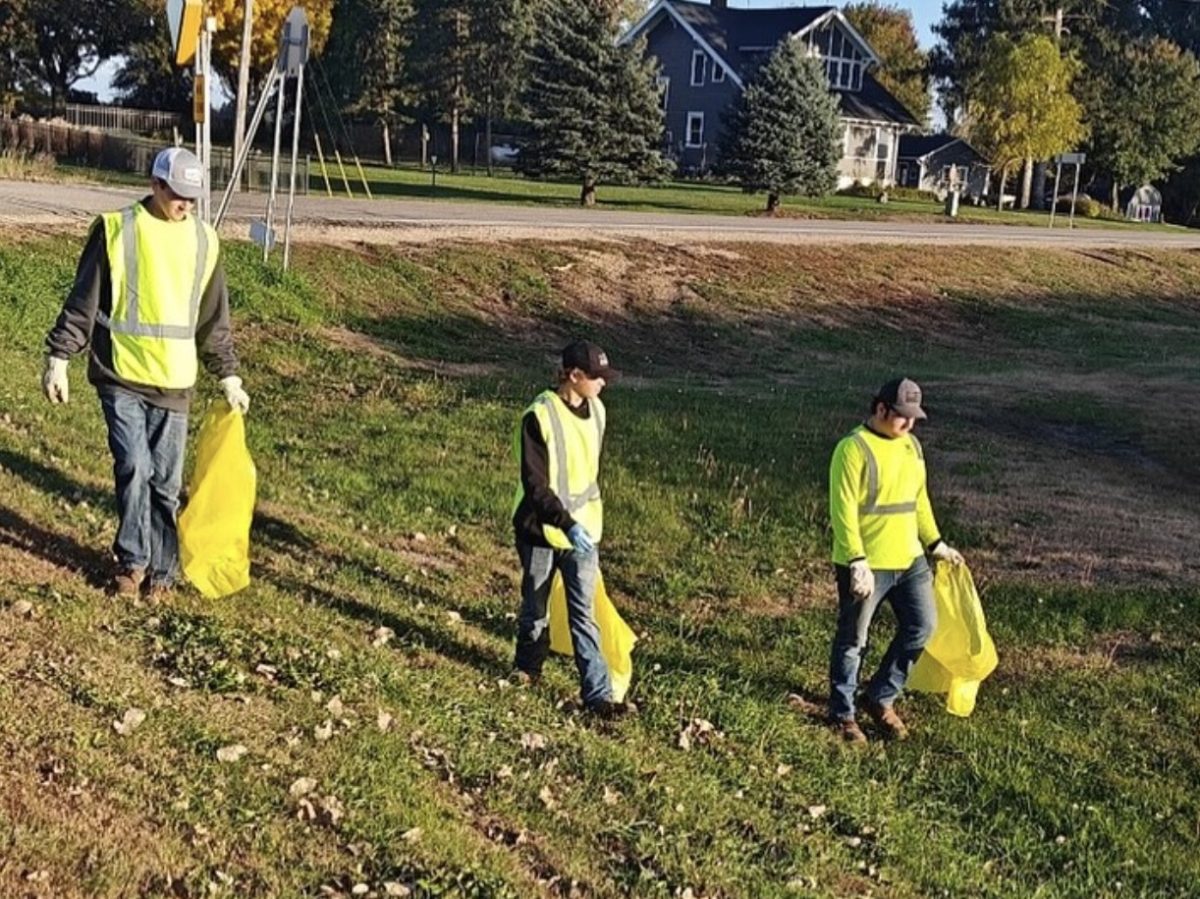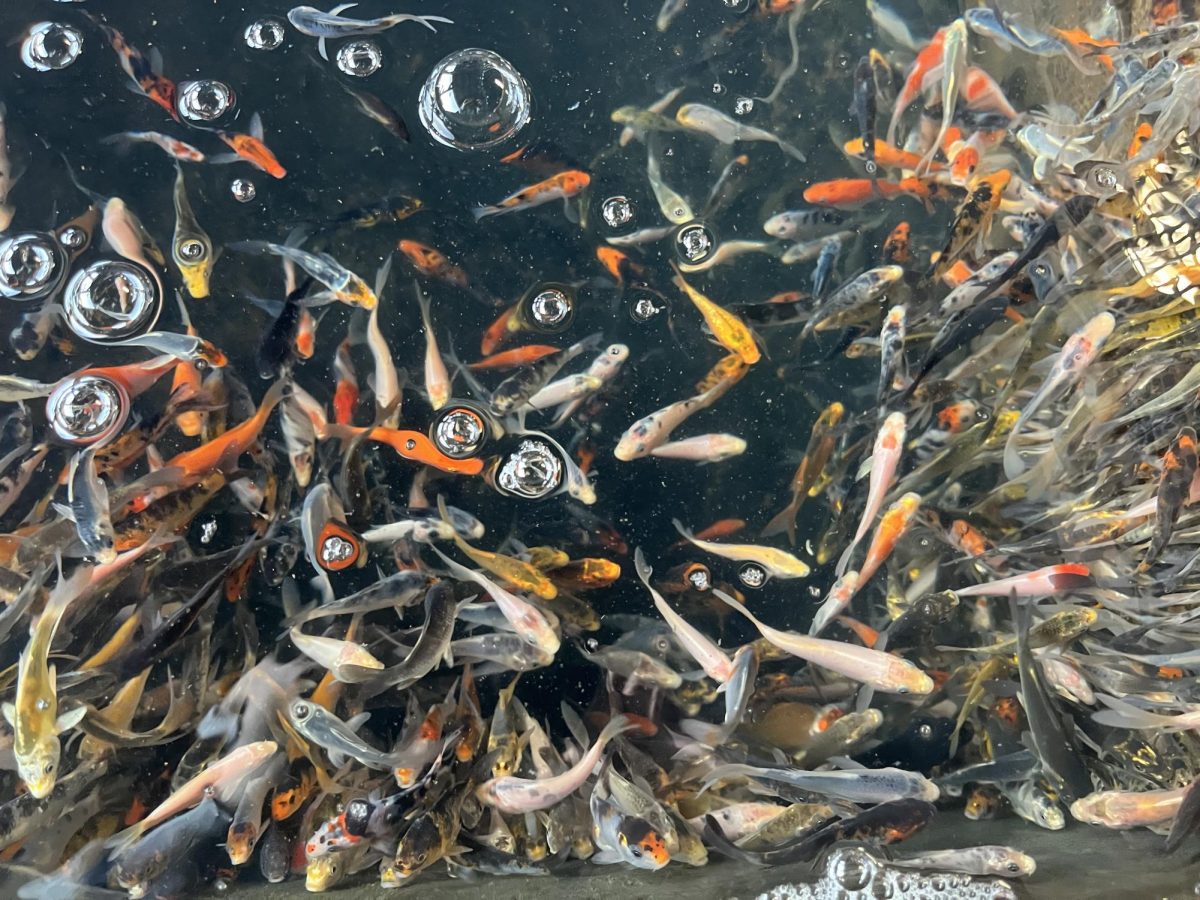Young agriculturalists change the world

Over five years between 2012 and 2017, the agricultural industry received a startling but subtle shock. According to the United States Department of Agriculture (USDA), the average age of farmers increased from 56.3 to 57.5, a factor of 1.2 years. These 1.2 years may seem unassuming at first glance, but the statistic perpetuates a larger trend that has the power to uproot the entire agriculture industry. Without an influx of a younger farming generation, agriculture could have a difficult path to feed the world and produce resources.
Fortunately, many organizations such as the Cannon Falls FFA chapter in Minnesota of the National FFA Organization (formerly known as the Future Farmers of America) are working on a local level to take up the fight to support industrial systems while implementing sustainable practices to ensure a better future for themselves and the world. “My emotions toward the future of agriculture are extremely positive,” said Dr. Travis Park, the National FFA advisor and North Carolina State University professor.
Rural communities, such as Cannon Falls, find themselves in quite a predicament as of late. It is difficult for many young, aspiring farmers to break into the industry due to high land prices, large-scale farms, and expensive technologies. Tim Anderson, a banker at First Farmers and Merchants Bank in Cannon Falls, deals often with loan financing for farmers. “Ag production is a capital intensive (cash and/or equipment) business. Returns can vary which translate to risk for the farmer,” he expanded.
These factors discourage many young agriculturalists from entrepreneurial efforts, and maintain the idea of “inherit or marry into it,” thus decreasing the amount of small-scale farms and increasing the amount of large-scale or corporate farms. The USDA’s 2022 data include large-scale family farms, although only making up 3% of all farms, account for 47% of crop value production in the United States.

It is difficult for small and mid-sized farms to gain a strong economic footing; farming is technologically advancing rapidly, which boosts production but is costly. Additionally, the data claim most farmers have an outside source of income, and small-scale farmers especially depend on outside income to survive.
Anderson did mention several mechanisms for small and new farmers, some of which include risk management through contracting, part-time farming, working with relatives or acquaintances, financing through loans, working with larger producers, and farming after an early retirement. “This toehold lets successful operators grow and expand their ag businesses – either with more livestock or to start owning land,” Anderson expressed.
Nevertheless, these challenges make traditional farming difficult, which opens doors for new agricultural techniques to make a foray into the public sphere.
The biggest source of hope for agriculture is young people. Young agriculturalists hold the key to sustainable agriculture in light of a changing climate. Young agriculturalists craft creative business solutions so farms thrive. Young agriculturalists want to craft a better world. Young agriculturalists care.
Here at Cannon Falls High School, the Cannon Falls FFA chapter is tackling environmental health at the community level in a ditch clean-up through the Adopt-a-Highway program. Every spring and fall, the chapter completes its Environmental Building Communities benchmark. A typical ditch clean-up for the FFA chapter mobilizes the membership to pick up litter along a two-mile stretch along Highway 19, near the village of Vasa.
“We get put into small groups with people from our chapter so [you get] to grow your bond with them while also pulling garbage out of the ditch. It’s not polluting the earth while you’re picking up other people’s litter, as well as having a fun time with the people that you’re growing connections with,” chapter Assistant Officer Hilari Palodichuk explained.
By participating, members complete one of their three required annual community service events while simultaneously helping the planet and spending quality time with friends.
In addition to their existing community service projects, while the chapter attended the National FFA Convention in Indianapolis, many members learned of other ways to serve both the community and stay sustainable. The National FFA Organization has made sustainability measures a priority in recent years. Dr. Park described, “The production of food and fiber, conservation of fresh water, and stewardship of our resources in a sustainable environment will only be more important every day going forward.”
The organization is growing exponentially, reaching a record 945,000 members this year. With this flock of young agriculturalists, the FFA has used its platform for good; the Living to Serve program and Sustainability initiatives encourage chapters to leave the world better than they found it.
Dr. Park is optimistic that FFA members across the country will go on to propel agricultural progress: “What gives me the most hope is that our National FFA Organization currently has the highest membership in its history. Also, we have the most support of the agricultural and educational sectors ever.”
With this widespread support, the National FFA Organization is expanding its influence and addressing the biggest problems facing modern agriculture.
Not only are young agriculturalists confronting climate change, but they are able to provide innovative business ideas to existing farm operations. At Ozark Fisheries in Martinsville, Indiana, the third-generation president, Larry Cleveland, shared information about his family’s business model. His children, the fourth generation, devised a new market for their previously exclusively wholesale model: e-commerce. Larry Cleveland’s daughter, Margaret Cleveland, elucidated, “We started having more and more requests to have fish shipped directly to the customer. So we saw an opportunity to create an avenue for individuals to order and receive their first directly from our family fish farm to the customer’s door.”
This shift included using platforms such as Amazon, eBay, Walmart, and Ozark Fisheries’ own website, which in turn also bridged the crack between farm and customer.
The massive increase in business also prompted Ozark Fisheries to strengthen its previous technology and implement processing software systems. She elaborated, “We have really worked to update our technology, websites, and social media the past few years to share more of our fish farm story.”
Increasing production costs coupled with a decreasing number of total farms has placed agriculture at a crossroads with a variety of paths forward, but young agriculturalists provide promise for the industry. It is clear the seeds of success were planted in the best hands, and Dr. Park emphasized, “We have extremely bright and talented young people who can address the challenges of agriculture, food, and natural resources.”









